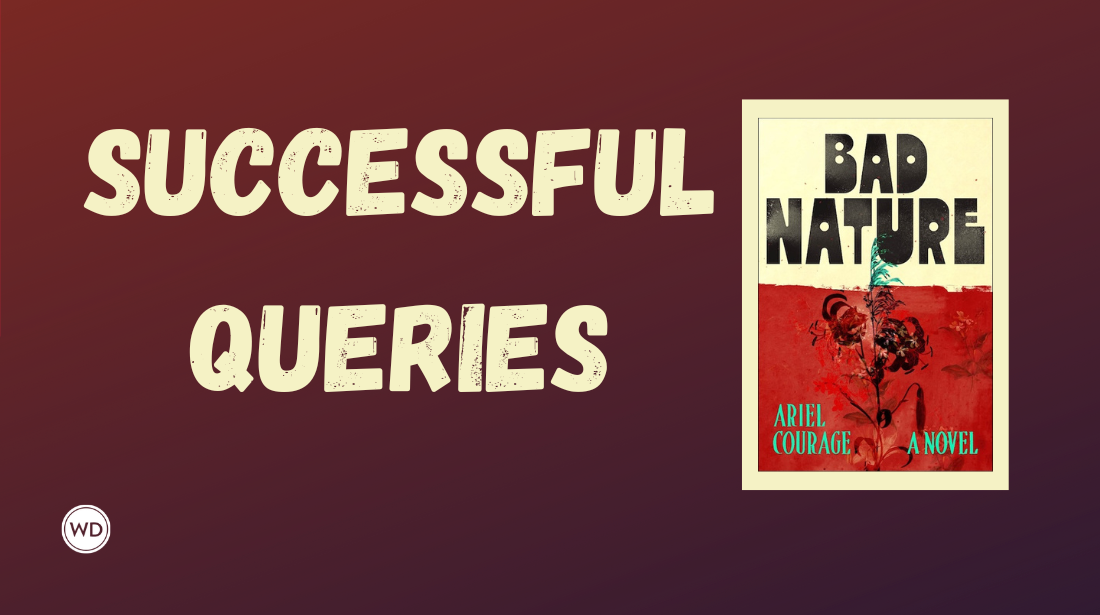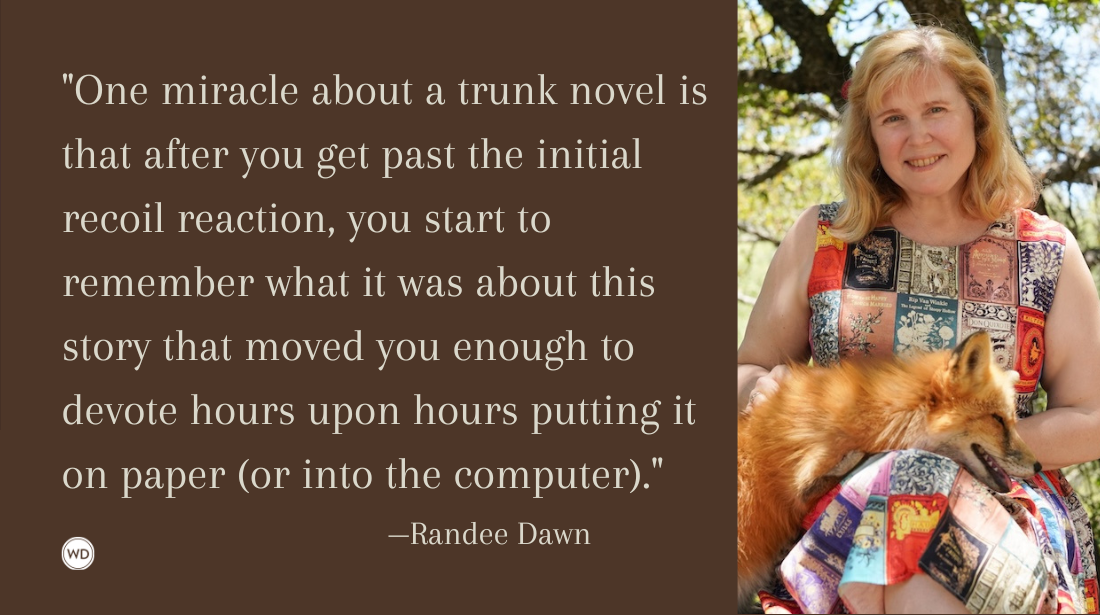Creating an Author Success Map: Why Reasonable Expectations Can Help Grow Your Author Brand
Marissa DeCuir shares her three-step process for creating an author success map that helps writers identify and personalize success benchmarks for their writing careers. With reasonable expectations, writers can find more success.
Writing and publishing a book is a huge accomplishment, as authors pour enormous amounts of time, energy and creativity into their books. But once your baby is out in the world, how do you measure whether it's "successful" or not? What does "success" for a book even look like in a time when millions are released each year?
Some authors define success by industry benchmarks, like hitting The New York Times bestseller list or scoring a review with major media outlets. Others compare themselves to fellow writers, the ones who are landing keynote speaking gigs, hosting sold-out book events, becoming national book club picks, or who just, well, seem to be doing better (whatever that means). And for some, success is all about the numbers: Sell 5,000, 10,000, 100,000, or a million books, and you'll know you've "made it."
If you're not careful, you can begin to equate "success" with "fame" before you even realize the difference. It's critical to stop and ask yourself: How do you define success? What does it look like for you and your book specifically?
Without a clear, realistic, and (perhaps most importantly) personalized definition of success, it's all-too-easy to miss your very own milestones and accomplishments. You may even begin to believe you're "failing" as an author, when in fact you are succeeding—just maybe by a different definition than the one you've internalized.
Understanding how you define success, and how to set realistic benchmarks for getting there, is one of the most important things you can do as an author. Here are three steps to setting you on the right path for seeing—and celebrating!—your own success.
1. Know what you're actually trying to accomplish with your book.
Start by asking yourself: Why did I write this book? Seriously, think this through. Is it because you have a story you're passionate about telling? Are you trying to establish a brand, or position yourself as an expert in your field? Was writing a book a personal challenge for yourself, or do you envision this as the first step in a whole new career as an author? What gave you the most satisfaction during this process: Getting your book down on paper, revising it, the thrill of confirming your publishing route, or the dream of readers discovering you?
Really think through your why. Understanding what got you to this point in your writing journey will help you understand where you want to go—and how to realistically get there.
*****
Writing strong first pages requires a great hook, a strong voice, and a clear premise. The first sentence should immediately catch the reader's attention, while the subsequent text should leave the reader wanting to dive further into the pages of the manuscript. But making the first pages of your story absolutely un-putdownable takes practice, patience, revision, and an eye for detail. Which is why we're here: to discuss what to do (and not to do) to make your opening pages stand out.
*****
2. Write your "success" list.
Make a list of all the ways you define authorial success. Go wild. Write down everything you're proud of already accomplishing, and everything you may ever wish to accomplish, big and small.
Items in your list could include: Writing and/or publishing a book (it's absolutely worth celebrating, so write it down!). Selling 10 copies. Selling 100, 1,000, or more. Landing your first speaking gig or book panel slot. Having book clubs request your book. Getting an endorsement from an author in your genre. Getting a favorable review from a media outlet. Increasing your fan engagement online. Hitting a bestseller list. Winning a book award. Transforming the life of one reader. Reaching avid readers of your genre and consistently growing your readership.
Some of the items on the list may be dreams you've had for a long time. And some may surprise you as you may define success in ways you never realized! Writing your success list will help you clearly see what you wish to accomplish, and what you've already achieved.
3. Create a "success" map.
Now organize your list into three columns. The first column should include everything you've already accomplished in your publishing journey, or that you're reasonably certain you will very soon. You've written and published a book? Yay! Add it to column #1. You've sold your first book, or you found a team to help you professionally publish your book independently? Write it down. You started a monthly email newsletter or author Facebook page? Boom: column #1! The first column is your space for keeping track of—and celebrating!—the milestones already met or goals you're on the cusp of achieving.
In column #2, list the success items that require more work, but that you feel you can realistically accomplish over time. You may have already connected with one book club, and your next goal is to connect with 10. This is a realistic goal that you can work toward over time. Maybe you've booked one author event, and now you want to schedule three more—column #2! You may feel confident about selling 10 books, but you really want to sell 100, 200, or 500. Think about the longer term goals you can realistically work to accomplish, and add them to the second column.
In column #3, add your biggest, flashiest, most pie-in-the-sky dream goals: The New York Times bestseller list. The major media coverage, or front-page book review. Selling out a first print run, or getting a movie deal. No matter how big it is, it's important you write it down. Why? Because you have to identify what you truly want in order to work for it—and sometimes writing down those big dreams helps us recognize whether we can realistically achieve them, or which steps we need to take to reach for those stars.
What resources are available to help you get there—or at least get closer? Are you wanting to hit a bestseller list without a professional book cover, distribution team and full-scale marketing effort? Are you expecting a review from a major newspaper without having an advanced reader copy available at least four months prior to publication date and meeting other outlet requirements?
If reading the items in column #3 inspires you to work harder, great! If you're feeling discouraged by how out-of-reach some goals in this column seem, fold that part of the page over or cover it with Post-Its. The important part is to write these things down and free yourself to focus on the awesome successes you're already achieving in column #1, and the realistic goals you're working towards in column #2. You may indeed be able to work towards some goals in column #3 over time. You may also feel more empowered to let some of these go or make revisions as you become more familiar with the book industry yourself—and as you begin celebrating your other many successes.
The purpose of this exercise is to help you clearly identify how you define success, outline reasonable expectations for what you want to achieve, and then set attainable steps for working towards your goals. And it's certainly meant to help you recognize—and celebrate!—each milestone you hit along the way. Writing a book is an incredible feat all on its own. Designing your own personal plan for success will help you find satisfaction and pride in the goals you've already accomplished, while setting realistic expectations for future success as an author.
Marissa DeCuir is a real person, as far as she knows. She’s the president of Books Forward, a veteran author publicity and book marketing firm that represents real authors from all over the world. As a former award-winning journalist, she approaches book promotion with a reporter’s mindset—and feels particularly passionate about helping authors differentiate fact from fiction.








